Essay
A Parade at the End of the World
10/11/2018
Nate Pyper
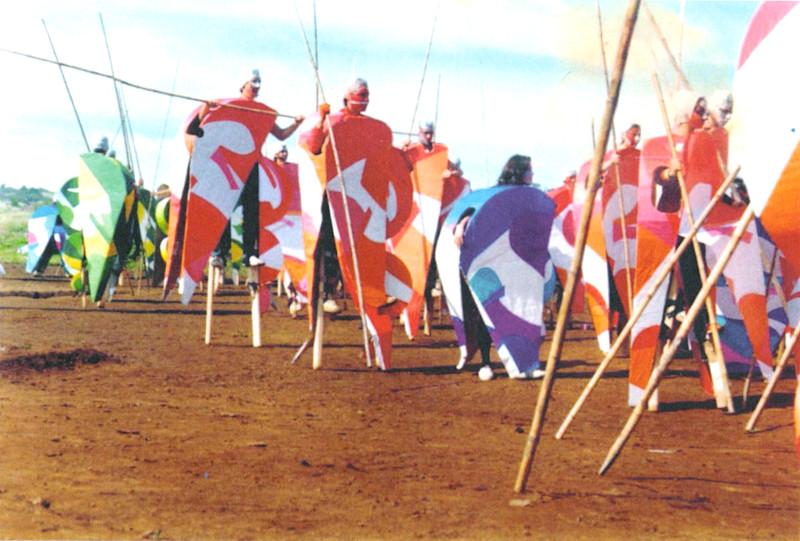
I.
The parade is always with us, even in its absence. Recently enlisted in an effort to exhibit American “military might,” the parade has reminded us of its ability to flaunt power. In its surplus, power parades. But this specific parade, the one planned to remind the world of a superpowerful iron-fistedness, has since been postponed (indefinitely), roundly opposed by pretty much everyone.
And yet the parade goes on. The parade goes on because it is useful. It is useful in order to maintain hegemonic order, but also, in its multi-meaning mutability, it is useful in order to resist order. Parades are bouquets of bodies that, depending on who, when, and where, are used to invoke sameness or difference through expressions of celebration, memorial, resistance, fanfare, “military might,” “military won’t,” and any other host of reasons that two or three might decide to take up together.
Parades are deceptively easy to reproduce. All that’s needed is an ability and aspiration to move, a space to move within, and other people with whom to move within it. A particularly pompous parade might employ a host of signifiers of identity including song; dance; costumes and uniforms; balloons large and small; banners; formations; and floats—but none of these qualify as prerequisites. A parade need not attract spectators, though a flamboyant one certainly calls for an audience. Time may be used to enforce order, or it might be disregarded altogether. A parade might go on for miles or around in concentric circles. The street is a common site to parade, but most any open space will do. All these elements work together to yield a distributed net of transformative effects. As Adrienne Edwards reminds us, “The concept of assemblage, famously formulated by Deleuze and his collaborator Félix Guattari, is the basic set of conditions to enable a becoming.”
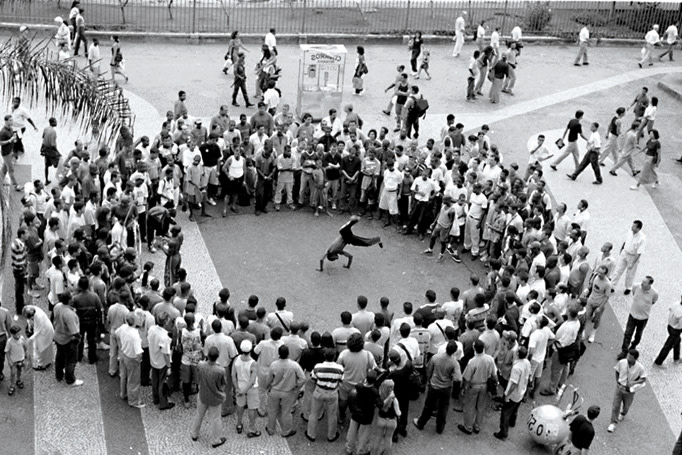
II.
For all of these reasons, parades effectively inaugurate an “other” space. A parade produces the conditions that can enact an autonomous zone, a freely-enacted utopia, a block-by-block party. In practice, it is both a speculative, aspirational, fictional space, as a well as a real, historical, lived space. It is a space that only exists through the relation and proximity of bodies together; for this reason it can happen at any time in any place and evaporate as quickly as it materializes. At its best, the parade is an initiation not of a new way forward but of ways outward, determined in the steps of each parader. The paraders may choose to follow a set course or to follow the people at the front; they may also choose to determine their route dialectically based on ever-changing conditions through space and time. They may break off from each other and pursue other paths. So it goes.
When it comes to “other” spaces of sociality, the field of possibility has been mapped out in vivid detail: Michel Foucault gives us heterotopias; Stefano Harney and Fred Moten outline the undercommons; Hakim Bey advocates for the Temporary Autonomous Zone; Craig Wilkens champions D-Space; José Esteban Muñoz describes a disidentificatory position.
It’s hard not to be charmed by these possibilities. They don’t claim to be exterior “outside” spaces but exist interior to reality itself, conspiring with and against the ever-unfurling now. They are a way out through a way in. For some, retiring to these spaces might feel defeatist, or at least strategically essentialist: the current order of things is too all-enduring and too all-encompassing, thus these liberatory modes of being are only available to us in small bursts of freedom. I’d like to think that a more generous reading of these spaces values them not just for their world-apartness, but for the potential of their best attributes to spillover into normative space. So what do these spaces offer? What methods of relating to each other can we import into the quotidian? And how might the parade facilitate this aim?
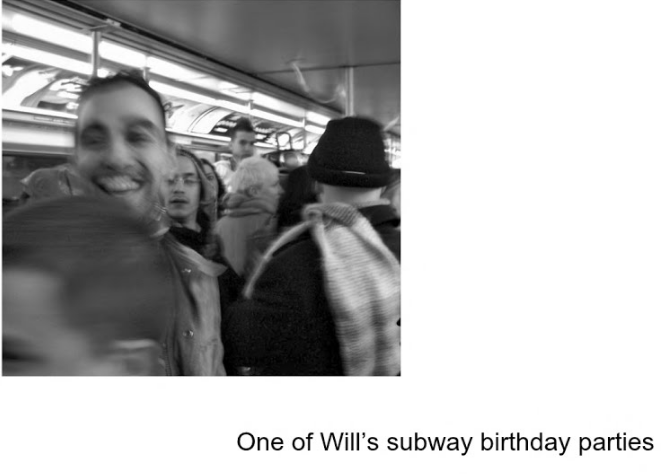
III.
Amber Ternus describes one such possibility of the parade in action: “More than anything, I will remember Will for his birthday parties on the subway. Those were very iconic. He just threw it at us, like, ‘Hey, we’re going to take over a subway car and have a dance party.’”
Ternus’s collection comes from Army of Lovers: A Community History of Will Munro, a book by Sarah Liss that records oral accounts of the life and work of Will Munro. A Toronto artist, activist, zinester, and DJ (who organized the legendary, long-running queer club night Vazaleen), Munro died of brain cancer at the age of 35.
Munro’s insatiable lust for life spilled over into otherwise regulated and unremarkable spaces like the subway system, resulting in an ecstatic resistance to any “accepted” use of civic space:
John Caffery: It was pandemonium, mayhem. People were hanging off the bars and dancing on the seats.Amber Ternus: All of a sudden, there were just all these people there and we all knew each other. At the first party, there we probably twenty-five to thirty people. We just took over the subway car, put on the music and were, like, hanging from the bars, having a total instantaneous dance party, going crazy. We all had such an amazing, fun, creative bond with each other. We were so free around each other. We managed to never get in trouble. And then they kept getting bigger and bigger until, at the last that I remember, the train was so full, and there were so many of us, it was really like being in a club. We certainly made a bit of a mess—maybe we shouldn’t have been as messy as were were on the subways, now that I’m older and thinking about the poor workers who had to clean up. Throwing confetti around, hanging from the monkey bars, everybody trying to do acrobatics in there, just totally funny, being pervy… And then of course we’d all go back to somebody’s house and party the night away.John Caffery: The subway doors would open, and it was like, “Come on in!” I felt like there had always been this “Join us” kind of philosophy. It was never about being too cool for others. We wanted to bring people in. And that was part of the culture of Vazaleen. It really did feel like all the freaks could unite and have safe space there. If you can get with the freaks, then we want you here.
What’s so seductive about Munro’s subway parties is not just the insistence on making room for queer celebration in a space that otherwise all but refused it, but that this zone of “pervy” play would take place in motion. These weren’t examples of fixed interventions in static spaces. These were parties a la the portable, they were going somewhere. Party-goers came together with a shared determination to be transported. Where would they end up? Maybe it didn’t matter; maybe it never mattered; maybe the only thing that mattered was that they ended up somewhere different from where they started.
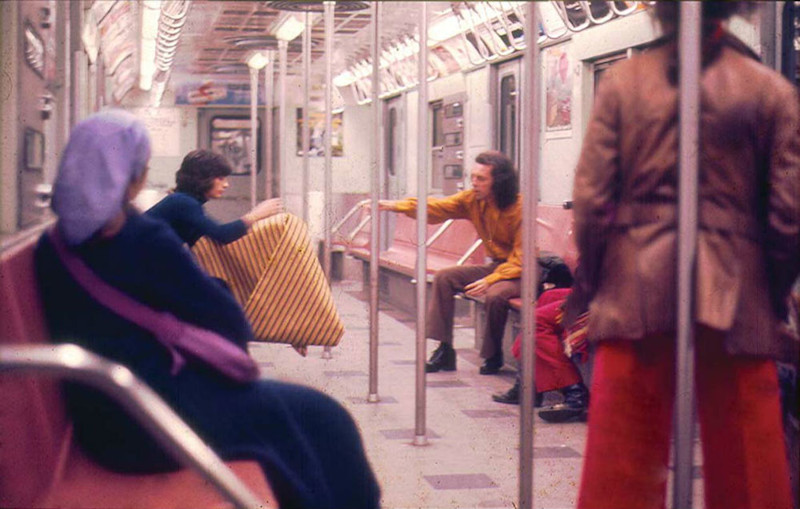
IV.
Will’s Toronto subway parties bring to mind the movement work of another queer: Brazilian artist Hélio Oiticica and his colorful fleet of Parangolés that were deployed in urban settings across Rio de Janeiro at the commons, on the street, and in the subway. Oiticica’s Parangolés are impromptu garments that challenge the normative order of being in the world. In her essay on the decolonial imperatives of Latin American artwork of the ’60s and ’70s, María Elena Lucero describes them this way: “The 1964 Parangolés were capes that were made of ephemeral materials, outside the art circuit. The spectators, besides integrating the work, would make movements in space to the rhythm of Rio de Janeiro samba, thus establishing a dialogue with the surrounding context.”

Often cumbersome in their construction, wearing a Parangolé produces a reflexivity through which one becomes aware of how the Parangolé affects their movement, and in turn, how their movement affects the Parangolé. In practice, Oiticica’s work advocates for a form of body literacy that encourages participants to “read” the world around them through the bodies that constitute it, and, by the same means, equips them to “rewrite” it. As Lucero puts it, Parangolés delineate zones of “self-conscious liberation” and act as “decolonial signs” during times of oppression.
This effect was echoed by the aims of Oiticica’s contemporaries. Educator and philosopher Paulo Freire was an impassioned advocate for conscientização, a process by which “people are encouraged to analyze their reality, to become more aware of the constraints of their lives, and to take action to transform their situation.” Freire understood literacy as the means for collective liberation and individual autonomy, and significantly, he understood literacy as a powerful social event that necessarily requires movement from one state of consciousness to another. Artist Lygia Pape exteriorized these interior aspirations through works like Divisor (1968), a group garment that haloes a constellation of heads that puncture the surface. The work at once dramatically emphasizes the distinct identities of each participant while blurring the boundary between a collective subject and a collective of subjects.
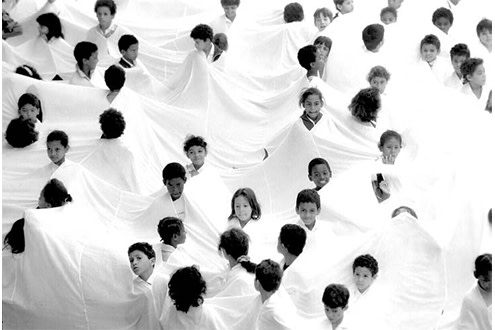
These poetic formulations of individuated bodies moving through space call to mind Spinoza’s conception of the multitude: a notion of a population “that has not entered into a social contract with a sovereign political body, such that individuals retain the capacity for political self-determination.”
The multitude distinguishes between the homogenous droning mob (the parade at its worst) and a variegated omni-directional collective of subjects (the parade at its best). The multitude resists classification, especially that which would strip agency from its constituents and mask the plurality of the colonized body politic that Gayatri Spivak warns against.
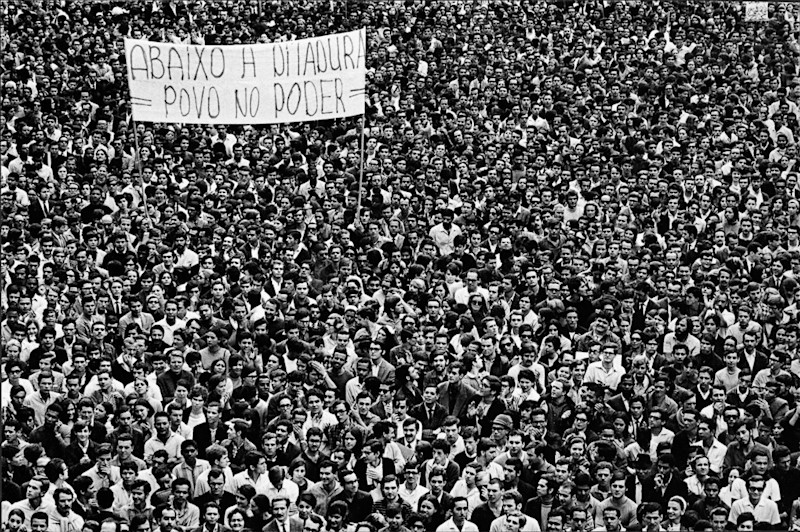
V.
While in Rio de Janeiro visiting family in the summer leading up to the 2016 Olympic Games, I witnessed the carioca spirit of life lived in public in full bloom. The city was a flurry of bodies, even more so than usual. The Olympics and previous FIFA World Cup had set into motion a wave of changes to civic life, though these changes largely sidestepped any serious structural redevelopment. Military presence increased. Poverty and crime were displaced rather than eradicated, exacerbating a widening disparity between the abject poor and the excessively rich. Many never experienced any of the so-called benefits that the Games promised.
One day on my way back home from the store, I watched as a demonstration materialized at a nearby square. Protesters handed out stickers and literature to onlookers with phrases like “A LUTA NÃO VAI PARAR” (THE FIGHT WILL NOT STOP). Banners announced a new honorific for the Olympics as “os Jogos da Exclusão”, or, the Exclusion Games. Soon hundreds had gathered in the square and began marching down a street that would eventually lead them to the Opening Ceremonies. I joined them along with other bystanders and walked until the crowd passed in front my grandma’s apartment. As I watched from her window a few floors up, the protest ballooned to thousands of paraders. I don’t remember when it ended, or if it ever did.
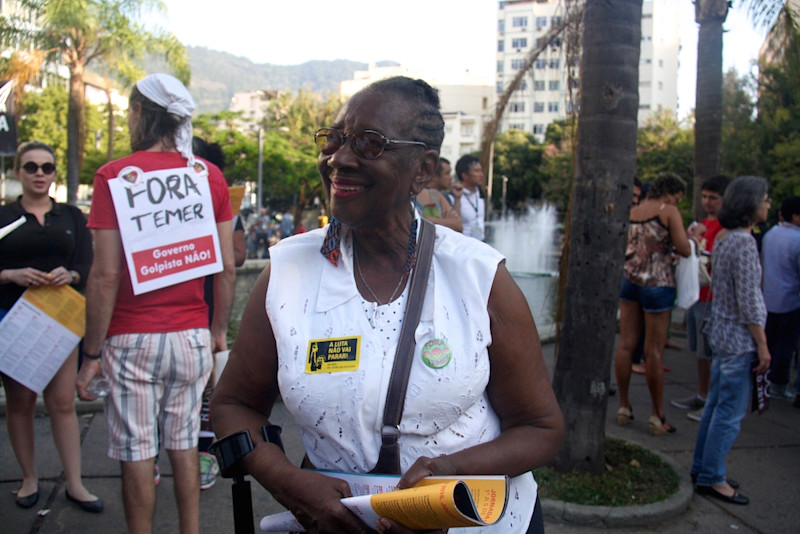
In fact, the protest continues today—most recently as a resistance to the very real threat of a return to fascist military rule. In many ways, the protests in Rio are the embodiment of the frenzy already present in the city: a collision of the urban and the non-urban, the private and the public (these two switch places often). Plants stack on top of plants, buildings on top of buildings on top of mountains, bars and bakeries occupy every corner with people spilling out, all kinds, black, brown, and white, rich and poor, millions of them—a “chaotic riot of events and impulses” as Ernesto Neto puts it. The perfect conditions to enable a becoming.
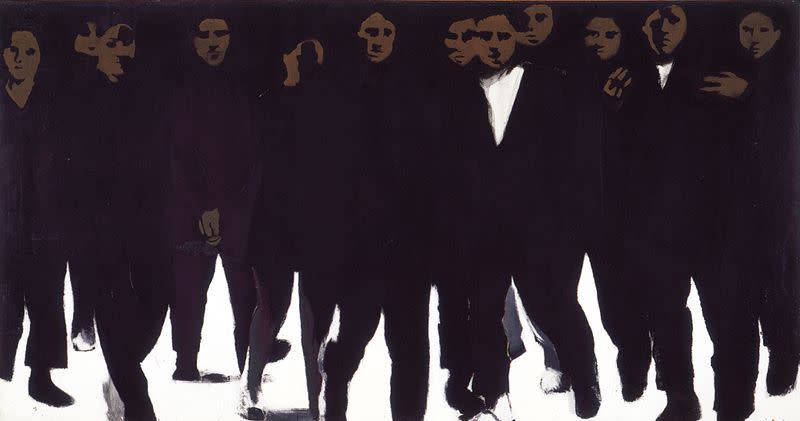
In her short story The Ones Who Walk Away from Omelas, Ursula Le Guin describes a prosperous city whose abundant joys and myriad pleasures are the result of unseen exploitative labor. Most of its citizens don’t mind. The pleasures are sweet and the horrors are easy to ignore. But some cannot bear it and choose to walk away. We don’t know where they walk to, but those who do are bound by a shared mobility that leads them from injustice towards… something else.
When utilized as an emancipatory mode of sociality, the parade is a nomadic network of inter-determined activities that insist on something else. For those who seek to maintain the current order of things, the parade’s biggest threat is not its size, its type, or its destination; it is its potential to transmute the ephemeral into the perpetual. Paraders at the end of the world are petitioners against the normative order of space and its agreed upon use. Together they ask: what might it mean to exist outside of systems of control while inside the embrace of others?
Nate Pyper is an alphabet artist working in publishing, performance, and video. He maintains an ongoing research practice on queer anarcho-punk zines of the late 80s and early 90s. He is a 2018 graduate of the Yale School of Art.
Nate Pyper is an alphabet artist working in publishing, performance, and video. He maintains an ongoing research practice on queer anarcho-punk zines of the late 80s and early 90s. He is a 2018 graduate of the Yale School of Art.
Are.na Blog
Learn about how people use Are.na to do work and pursue personal projects through case studies, interviews, and highlights.
See MoreYou can also get our blog posts via email